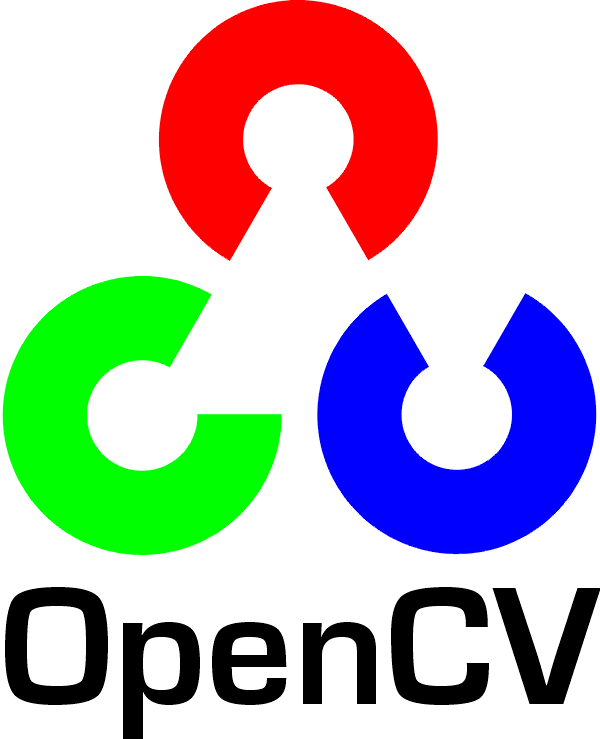Common Interfaces of TrackerFeatureSet
TrackerFeatureSet
Class that manages the extraction and selection of features
[AAM] Feature Extraction and Feature Set Refinement (Feature Processing and Feature Selection). See table I and section III C
[AMVOT] Appearance modelling -> Visual representation (Table II, section 3.1 - 3.2)
-
class TrackerFeatureSet
TrackerFeatureSet class:
class CV_EXPORTS_W TrackerFeatureSet
{
public:
TrackerFeatureSet();
~TrackerFeatureSet();
void extraction( const std::vector<Mat>& images );
void selection();
void removeOutliers();
bool addTrackerFeature( String trackerFeatureType );
bool addTrackerFeature( Ptr<TrackerFeature>& feature );
const std::vector<std::pair<String, Ptr<TrackerFeature> > >& getTrackerFeature() const;
const std::vector<Mat>& getResponses() const;
};
TrackerFeatureSet is an aggregation of TrackerFeature
TrackerFeatureSet::selection
Identify most effective features for all feature types (optional)
-
C++: void TrackerFeatureSet::selection()
TrackerFeatureSet::removeOutliers
Remove outliers for all feature types (optional)
-
C++: void TrackerFeatureSet::removeOutliers()
TrackerFeatureSet::addTrackerFeature
Add TrackerFeature in the collection. Return true if TrackerFeature is added, false otherwise
-
C++: bool TrackerFeatureSet::addTrackerFeature(String trackerFeatureType)
| Parameters: |
- trackerFeatureType – The TrackerFeature name
|
|---|
-
C++: bool TrackerFeatureSet::addTrackerFeature(Ptr<TrackerFeature>& feature)
| Parameters: |
- feature – The TrackerFeature class
|
|---|
The modes available now:
- "HAAR" – Haar Feature-based
The modes that will be available soon:
- "HOG" – Histogram of Oriented Gradients features
- "LBP" – Local Binary Pattern features
- "FEATURE2D" – All types of Feature2D
Example TrackerFeatureSet::addTrackerFeature :
//sample usage:
Ptr<TrackerFeature> trackerFeature = new TrackerFeatureHAAR( HAARparameters );
featureSet->addTrackerFeature( trackerFeature );
//or add CSC sampler with default parameters
//featureSet->addTrackerFeature( "HAAR" );
Note
If you use the second method, you must initialize the TrackerFeature
TrackerFeatureSet::getTrackerFeature
Get the TrackerFeature collection (TrackerFeature name, TrackerFeature pointer)
-
C++: const std::vector<std::pair<String, Ptr<TrackerFeature>>>& TrackerFeatureSet::getTrackerFeature() const
TrackerFeatureSet::getResponses
Get the responses
-
C++: const std::vector<Mat>& TrackerFeatureSet::getResponses() const
Note
Be sure to call extraction before getResponses
Example TrackerFeatureSet::getResponses :
//get the patches from sampler
std::vector<Mat> detectSamples = sampler->getSamples();
if( detectSamples.empty() )
return false;
//features extraction
featureSet->extraction( detectSamples );
//get responses
std::vector<Mat> response = featureSet->getResponses();
TrackerFeature
Abstract base class for TrackerFeature that represents the feature.
-
class TrackerFeature
TrackerFeature class:
class CV_EXPORTS_W TrackerFeature
{
public:
virtual ~TrackerFeature();
static Ptr<TrackerFeature> create( const String& trackerFeatureType );
void compute( const std::vector<Mat>& images, Mat& response );
virtual void selection( Mat& response, int npoints ) = 0;
String getClassName() const;
};
TrackerFeature::create
Create TrackerFeature by tracker feature type
-
C++: static Ptr<TrackerFeature> TrackerFeature::create(const String& trackerFeatureType)
| Parameters: |
- trackerFeatureType – The TrackerFeature name
|
|---|
The modes available now:
- "HAAR" – Haar Feature-based
The modes that will be available soon:
- "HOG" – Histogram of Oriented Gradients features
- "LBP" – Local Binary Pattern features
- "FEATURE2D" – All types of Feature2D
TrackerFeature::compute
Compute the features in the images collection
-
C++: void TrackerFeature::compute(const std::vector<Mat>& images, Mat& response)
| Parameters: |
- images – The images
- response – The output response
|
|---|
TrackerFeature::selection
Identify most effective features
-
C++: void TrackerFeature::selection(Mat& response, int npoints)
| Parameters: |
- response – Collection of response for the specific TrackerFeature
- npoints – Max number of features
|
|---|
Note
This method modifies the response parameter
TrackerFeature::getClassName
Get the name of the specific TrackerFeature
-
C++: String TrackerFeature::getClassName() const
Specialized TrackerFeature
In [AAM] table I and section III C are described the most known features type. At moment only TrackerFeatureHAAR is implemented.
TrackerFeatureHAAR : TrackerFeature
TrackerFeature based on HAAR features, used by TrackerMIL and many others algorithms
-
class TrackerFeatureHAAR
TrackerFeatureHAAR class:
class CV_EXPORTS_W TrackerFeatureHAAR : TrackerFeature
{
public:
TrackerFeatureHAAR( const TrackerFeatureHAAR::Params ¶meters = TrackerFeatureHAAR::Params() );
~TrackerFeatureHAAR();
void selection( Mat& response, int npoints );
bool extractSelected( const std::vector<int> selFeatures, const std::vector<Mat>& images, Mat& response );
std::vector<std::pair<float, float> >& getMeanSigmaPairs();
bool swapFeature( int source, int target );
bool swapFeature( int id, CvHaarEvaluator::FeatureHaar& feature );
CvHaarEvaluator::FeatureHaar& getFeatureAt( int id );
};
Note
HAAR features implementation is copied from apps/traincascade and modified according to MIL implementation
TrackerFeatureHAAR::Params
-
struct TrackerFeatureHAAR::Params
List of TrackerFeatureHAAR parameters:
struct CV_EXPORTS Params
{
Params();
int numFeatures; // # of rects
Size rectSize; // rect size
bool isIntegral; // true if input images are integral, false otherwise
};
TrackerFeatureHAAR::TrackerFeatureHAAR
Constructor
-
C++: TrackerFeatureHAAR::TrackerFeatureHAAR(const TrackerFeatureHAAR::Params& parameters=TrackerFeatureHAAR::Params() )
-
TrackerFeatureHAAR::selection
Identify most effective features
-
C++: void TrackerFeatureHAAR::selection(Mat& response, int npoints)
| Parameters: |
- response – Collection of response for the specific TrackerFeature
- npoints – Max number of features
|
|---|
Note
This method modifies the response parameter
TrackerFeatureHAAR::getMeanSigmaPairs
Get the list of mean/sigma. Return the list of mean/sigma
-
C++: std::vector<std::pair<float, float>>& TrackerFeatureHAAR::getMeanSigmaPairs()
TrackerFeatureHAAR::swapFeature
Swap the feature in position source with the feature in position target
-
C++: bool TrackerFeatureHAAR::swapFeature(int source, int target)
| Parameters: |
- source – The source position
- target – The target position
|
|---|
Swap the feature in position id with the feature input
-
C++: bool TrackerFeatureHAAR::swapFeature(int id, CvHaarEvaluator::FeatureHaar& feature)
| Parameters: |
- id – The position
- feature – The feature
|
|---|
TrackerFeatureHAAR::getFeatureAt
Get the feature in position id
-
C++: CvHaarEvaluator::FeatureHaar& TrackerFeatureHAAR::getFeatureAt(int id)
-
TrackerFeatureHOG
TODO To be implemented
TrackerFeatureLBP
TODO To be implemented
TrackerFeatureFeature2d
TODO To be implemented
